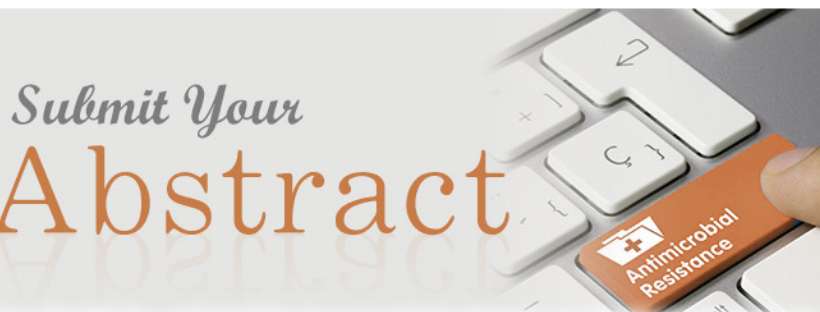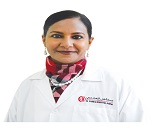Theme: The Antibiotic Resistance Crisis: Causes and Threats
Antibiotics Resistance 2020
Antibiotics Resistance 2020 invites all the participants from all over the world to attend “6th International Conference on Antibiotics & Antibiotic Resistance’’ scheduled to be held on Auguts 28-29, 2020 we are going to conduct the conference through Webinar . The conference invites all the participants across the globe to attend and share their insights and convey recent developments in the field of Antibiotics Resistance. The primary objective of this meeting is to compile researchers involved in antibiotic resistance prevention and control. The meeting will take a unified approach to research and it will bring about researchers specializing in different subjects related to antibiotic resistance.
ConferenceSeries Ltd organizes a conference series of 1000+ Global Events inclusive of 1000+ Conferences, 500+ Upcoming and Previous Symposiums and Workshops in USA, Europe & Asia with support from 1000 more scientific societies and publishes 700+ Open access Journals which contains over 50000 eminent personalities, reputed scientists as editorial board members.
Antibiotics Resistance 2020 is a platform to discuss and learn about the latest advancements in the field of Antibiotics and Antibiotic Resistance as the world’s consideration turned regarding the urgency of new antibiotics as the antimicrobial resistance is growing day by day. Many developed nations and International health organizations are trying to focus of the current situation and making new policies to prevent the adverse effects of Antibiotic resistance.
This conference gathers researchers, academia, labs, Drug Manufacturers, government agencies, health professionals, hospitals, young investigators, pharma and labs and presents their opinions through key notes, and case study presentations. This conference lays a platform for all the researchers working in the field of Antibiotics to know the latest developments and the current situation of the
2019 Highlights:
- 300+ Participation (70 Industry: 30 Academia)
- 10+ Keynote Speakers
- 50+ Plenary Speakers
- 20+ Exhibitors
- 14 Innovative Educational Sessions
- 5+ Workshops
- B2B Meetings
Target Audience
- Healthcare Students, Scientists, and professors
- Doctors
- Microbiologist
- Laboratories
- Bacteriology Researchers
- Faculty of bacteriology and infectious diseases
- Medical Colleges
- Healthcare Associations and Societies
- Business Entrepreneurs
- Directors, CEO’s of Organizations
- Business Development Managers
Conference Opportunities
- Speaker Presentations
- Poster Display
- Symposium hosting (4-5 member team)
- Workshop organizing
- For Researchers and Faculty Members
For Universities, Associations & Societies:
- Association Partnering
- Collaboration proposals
- Academic Partnering
- Group Participation
For Students and Research Scholars
- Poster Competition (Winner will get Best Poster Award)
- Young Researcher Forum (YRF Award to the best presenter)
- Student Attendee
- Group Registrations
For Business Delegates
- Speaker Presentations
- Symposium hosting
- Book Launch event
- Networking opportunities
- Audience participation
For Product Manufacturers
- Exhibitor and Vendor Booths
- Sponsorships opportunities
- Product launch
- Workshop organizing
- Scientific Partnering
- Marketing and Networking with clients
Track 1: Discovery of Antibiotics:
Antibiotics are a type of antimicrobials used in treatment and prevention of bacterial infections. They may inhibit or kill the growth of bacteria. Many antibiotics are also effective against protozoans and fungi; some are toxic to animals and humans also, even when given in therapeutic dosage. Antibiotics are not effective against viruses such as influenza or common cold, and may be harmful when taken inappropriately. Physicians must ensure the patient has a bacterial infection before prescribing antibiotics.
Track 2: Pharmacology of Antibiotics:
Antibiotics form part of a wider range of antimicrobial agents, a group which also includes antifungals, antivirals, antiprotozoal and disinfectants. This group is also known as chemotherapeutic agents. The session is open for clinical pharmacology of antibiotics, Drug therapy, Pathophysiology, Pharmacokinetics and Pharmacodynamics, Drug screening, characterization, synthesis and assays for therapeutic efficacy, Drug disposition, Regulations needed for the approval of antibiotics, Requirements for production of antibiotics, Clinical trials, Structure – Activity relationship, Antibiotic prophylaxis, Synthesis of antimicrobials, New methods of testing antimicrobial activity, Synergism between different types of antimicrobials, Design and testing of antimicrobial surfaces.
Track 3: Different Types of Antibiotics:
Antibiotics belong to a class of antimicrobials, a larger group which also includes anti-viral, anti-fungal, and anti-parasitic drugs. The main classes of antibiotics are beta-lactams which again include penicillin, cephalosporin, macrolides, fluoroquinolone, tetracycline, and aminoglycosides.
Track 4: Antibiotics for Emerging and Re-Emerging Diseases:
Antibiotic-resistant strains of pathogenic bacteria are increasingly prevalent in hospitals and the community. New antibiotics are needed to combat these bacterial pathogens, but progress in developing them has been slow. The session is open to discuss on synthetic tailoring, discovery of new scaffolds, designing screens that avoid rediscovering old scaffolds, repurposing libraries of synthetic molecules for use as antibiotics, Exploring microbial niches for products, molecular target selection, improving libraries to overcome resistance, Safety and efficacy, Vaccines available for the diseases, Phage’s and parasitic bacteria, Epidemiology and spread of microbes and resistance traits.
Track 5: The Emergence of Antimicrobial Resistance:
Antibiotic resistance refers specifically to the resistance to antibiotics that occurs in common bacteria that cause infections. The easy access and effectiveness of Antibiotics led to overuse in live-stock raising promotes bacteria to develop resistance. This led to widespread problems with antibiotic resistance. World Health Organization (WHO) classified antimicrobial resistance as a serious threat and no longer a prediction for the future. Antibiotic resistance is now among every part of the world and its affecting everyone irrespective to the age. When infections become resistant to first-line drugs, more expensive therapies must be used. A longer duration of illness and treatment, often in hospitals, increases health care costs as well as the economic burden on families and societies. To help prevent the development of current and future bacterial resistance, it is important to prescribe antibiotics according to the principles of antimicrobial stewardship, such as prescribing antibiotics only when they are needed.
The US Centers for Disease Control and Prevention (CDC) said today that antibiotic-resistant pathogens sicken 2 million Americans a year and listed the three most urgent threats as Clostridium difficile, carbapenem-resistant Enterobacteriaceae (CRE), and Neisseria gonorrhoeae. Antibiotic-resistant microorganisms play a role in 23,000 deaths each year, the CDC said.
In 2009, the ECDC and The European Medicines Agency (EMA) estimated that the overall cost for the EU in terms of extra health care costs and productivity losses totaled at least EUR 1.5 billion each year. For the US, estimates are as high as $20 billion in excess direct health care costs, with additional costs to society for lost productivity as high as $35 billion a year. Studies on deaths attributable to a small and differing selection of MDR infections show that, each year, these infections result in an estimated 25 000 deaths in 29 countries in Europe (5.1 per 100 000 inhabitants) and 23 000 deaths in the US.
Track 6: Antibiotics for Various Diseases and Infections:
Antibiotics are among the most frequently prescribed medications in modern medicine. Antibiotics are useless against viral infections. When you take antibiotics, follow the directions carefully. It is important to finish your medicine even if you feel better. If you stop treatment too soon, some bacteria may survive and re-infect you. Do not save antibiotics for later or use someone else's prescription.
Nearly 2 million Americans per year develop hospital-acquired infections (HAIs), resulting in 99,000 deaths – the vast majority of which are due to antibacterial-resistant pathogens. Two common HAIs alone (sepsis and pneumonia) killed nearly 50,000 Americans and cost the U.S. health care system more than $8 billion in 2006. Based on studies of the costs of infections caused by antibiotic-resistant pathogens versus antibiotic-susceptible pathogens, the cost to the U.S. health care system of antibiotic resistant infections is $21 billion to $34 billion each year and more than 8 million additional hospital days.
Track 7: Antimicrobial Resistance:
Antimicrobial resistance happens when microorganisms (such as bacteria, fungi, viruses, and parasites) change for exposing to antimicrobial drugs (such as antibiotics, antifungals, antivirals, antimalarial and anthelmintic). Without effective antimicrobials for prevention and treatment of infections, medical procedures such as organ transplantation, cancer chemotherapy, diabetes management and major surgery become at very high risk. Antimicrobial resistance is a complex problem that affects all of society and is driven by many interconnected factors. Single, isolated interventions have limited impact. There have been increasing public calls for global collective action to address the threat, including a proposal for international treaty on antimicrobial resistance.
Track 8: Antibiotics for Various Diseases and Infections:
Antibiotics are among the most frequently prescribed medications in modern medicine. Antibiotics are useless against viral infections.
When you take antibiotics, follow the directions carefully. It is important to finish your medicine even if you feel better. If you stop treatment too soon, some bacteria may survive and re-infect you. Do not save antibiotics for later or use someone else's prescription.
Nearly 2 million Americans per year develop hospital-acquired infections (HAIs), resulting in 99,000 deaths – the vast majority of which are due to antibacterial-resistant pathogens. Two common HAIs alone (sepsis and pneumonia) killed nearly 50,000 Americans and cost the U.S. health care system more than $8 billion in 2006. Based on studies of the costs of infections caused by antibiotic-resistant pathogens versus antibiotic-susceptible pathogens, the cost to the U.S. health care system of antibiotic resistant infections is $21 billion to $34 billion each year and more than 8 million additional hospital days.
Track 9: Antibiotic Shortage: A Serious Safety Concern:
Antibiotic shortage is of great concern to FDA and healthcare community as many of the antibiotics were the sole drugs to treat certain antibiotic-resistant infections for certain infectious conditions. Drug shortages pose a serious challenge for health care institutions, often interfering with patient care. A common practice during a drug shortage is to select an alternate therapeutic; however, these agents often present challenges and may create safety concerns. Patient harms including adverse events and medication errors may occur. Patients may also file complaints because of drug shortages. The session is open to discuss on Manufacturing site problems, shortage of raw materials, low commercial incentives, lack of approved manufacturers, Defect in packaging and labelling.
Track 10: Antibiotics in Different Industries:
Antibiotics must be used accordingly in humans and animals because both uses share to the emergence, persistence, and escalation of resistant bacteria. Resistant bacteria in food-producing animals are of particular concern. Food animals play as a source of resistant pathogens and resistance mechanisms that can directly or indirectly result in antibiotic resistant infections in humans. Resistant bacteria may be transmitted to humans through the foods we eat. Some bacteria have turned resistant to more than one sort of antibiotic, which makes it more difficult to treat the infections they cause. Sustaining the efficiency of antibiotic drugs is vital to insulating human and animal health.
Track 11: Micro Organisms in Recent Drug Discovery:
Environmental microbes are a leading source of drug discovery, and several microbial products (anti-tumor products, antibiotics, immune suppressants and others) are used frequently for human therapies. Most of these products were accessed from cultivable (<1%) environmental microbes, means that the large number of microbes were not targeted for drug discovery. With the onset of new and emerging technologies, we are poised to harvest novel drugs from the so-called 'uncultivable' microbes. Multidisciplinary way of linking different technologies can assist and reform drug discovery from uncultivable microbes and inspect the current cramp of technologies and scenario to swamp such constraints that might further expand the promise of drugs from environmental microbes.
Track 12: Drug Discovery and Novel Delivery Technologies:
In the prior most drugs have been invented either by identifying the active ingredient from traditional remedies or by serendipitous discovery. A new access has been to recognize how disease and infection are controlled at the molecular and physiological level and to mark specific entities based on this knowledge. The process of drug discovery involves the identification of candidates, characterization, screening, synthesis, and assays for therapeutic efficacy. Evolution of an existing drug molecule from a ordinary form to a novel delivery system can significantly improve its performance in terms of patient compliance, efficacy and safety. These days, drug delivery companies are engaged in the development of numerous platform technologies to get ambitious advantage, extend patent life, and increase market share of their products. Formerly a compound has displayed its value in these tests; it will begin the process of drug development prior to clinical trials.
Track 13: Clinical Trials of Antibiotics:
Prescribing doctors are, increasingly, using clinical trial data as a major source of information for evidence-based medicine for the treatment of infectious diseases, as in other clinical disciplines. However, it may be difficult to extract from these data the information that is needed for the management of the individual patient. At the same time, clinical trial data have been used, apparently satisfactorily, in the process of drug registration, and the pharmaceutical industry has spent increasingly large sums of money to satisfy the needs of this process. In the face of all these problems, changes in the way antibiotic clinical trials are designed and performed are clearly necessary, although this must not tip the balance so far as to render them less useful for those who currently derive greatest benefit from them.
Track 14: Antibiotics and Mechanism of Action:
Antibacterial action generally falls within one of four mechanisms, three of which involve the inhibition or regulation of enzymes involved in cell wall biosynthesis, nucleic acid metabolism and repair, or protein synthesis, respectively. The fourth mechanism involves the disruption of membrane structure. Many of these cellular functions targeted by antibiotics are most active in multiplying cells. Since there is often overlap in these functions between prokaryotic bacterial cells and eukaryotic mammalian cells, it is not surprising that some antibiotics have also been found to be useful as anticancer agents.
Track 15: Antibiotics: Market Analysis & Business Opportunities
The global systemic antibiotics market was valued at $39.6 billion in 2013 and is expected to reach $41.2 billion by 2018, at a CAGR of 0.8%. Since, 2005 this market is seen to grow at an annual rate of 6.6% until 2011. There are many companies manufacturing antibiotic these days and there are many other antibiotics present in the market such as aminoglycoside antibiotics and it covers about 79% of the global demand. Moreover, the other antibiotics such as penicillin have 8%, tetracyclines 4%, erythromycin 7%, streptomycin 1% and chloramnphenicol has 1 % market
The anti-microbials showcase is required to achieve USD 57.0 billion by 2024, as indicated by the new report by Grand View Research, Inc. Rising pervasiveness of irresistible illnesses particularly in creating locales, for example, Asia Pacific and MEA is foreseen to contribute towards showcase development.
Over 15.0% of the passings, in kids underneath the age of five, are assessed to be because of pneumonia and as indicated by the insights given by the WHO around 9.2 million passings were recorded in 2015. Like tuberculosis, the most elevated commonness of the sickness is recognized to be in the South Asian and Sub-Saharan locales. At present, the required anti-infection treatment is accessible just to 33% of the tainted populace, subsequently expanding the illness trouble.
Government changes particular to anti-microbials, for example, the Generating Antibiotics Incentives Now (GAIN) Act in the U.S. are anticipated to help showcase development over the conjecture time frame. This further expected encourage improvement of cutting edge drugs.
Unexpectedly, unverifiable administrative approaches are probably going to impede the development of this vertical affecting business sector development fundamentally. In 2013, the U.S. FDA changed the direction for enlistment preliminaries for drugs utilized in the treatment of intense bacterial skin and skin structure contaminations. The direction expresses the utilization of here and now proportions of hostile to infective adequacy (percent decrease in sore size at 48 to 72 hours) instead of long haul estimates, for example, goals of contamination at 10-14 days, which is named as Test to Cure or TOC.
Additionally Key Findings From the Study Suggest:
Antibiotic fragment including antibiotic medications, imidazoles, lincosamides and monoclonal antibodies held ordering share in 2015 and are additionally foreseen to develop at a lucrative development rate over the estimate time frame
Development of monoclonal antibodies for anti-infection safe microorganism is key feature of this fragment. Expanding frequencies of pneumonia, circulatory system diseases, and urinary tract contaminations (UTI) are foreseen to cultivate the use of carbapenems class of anti-infection agents.
Cell divider union inhibitors commanded the component viewpoint in 2015. Dominant part of the anti-infection agents, for example, penicillins, cephalosporins and carbapenems frames the cell divider union inhibitor class.
RNA blend inhibitors and additionally folic corrosive union inhibitors are foreseen to observe sound development over the gauge time frame. Improvement of a few antiviral medications which restrain translation and switch interpretation process are foreseen to help the development. Folic corrosive inhibitor sulfa drugs are foreseen to develop as they have wide application scope.
Asia Pacific by virtue of immense populace base, high predominance of irresistible sicknesses, control changes and more prominent utilization of nonexclusive medication held telling offer in 2015.
Latin America, particularly Brazil with solid development in pharmaceutical division is likewise anticipated to display gainful development. Flare-up of certain infections, for example, Ebola in African area likewise contributed towards the noteworthy development of MEA district.
Some of the key players in this vertical are Pfizer, Inc., Janssen Pharmaceuticals, Abbott, GlaxoSmithKline plc, Sanofi, Novartis AG, Bayer AG, Bristol Myers Squibb Company, Eli Lilly and Company and Astellas Pharma, Inc.
Terrific View Research has portioned the anti-infection agents advertise based on sedate class and locale:
Worldwide Antibiotics Drug Class Outlook (Revenue, USD Million, 2013 - 2024)
Cephalosporins
Penicillins
Fluoroquinolones
Macrolides
Carbapenems
Aminoglycosides
Sulfonamides
Other
Worldwide Mechanism Outlook (Revenue, USD Million, 2013 - 2024)
Cell Wall Synthesis Inhibitors
Protein Synthesis Inhibitors
DNA Synthesis Inhibitors
RNA Synthesis Inhibitors
Mycolic Acid Inhibitors
Anti-microbials Regional Outlook (Revenue, USD Million, 2013 - 2024)
North America
U.S.
Canada
Europe
UK
Germany
Asia Pacific
Japan
China
India
Latin America
Brazil
Mexico
MEA
South Africa
Past Conferences:
We are delighted to all our Organizing Committee Members, Keynote Speakers, Speakers, Delegates, Students, Exhibitor and Media partners for making our Past Antibiotics Resistance 2019 Conference in Orlando, Florida, USA
“5th International Conference on Antibiotics & Antibiotic Resistance” in May 30-31, 2019 at Orlando, Florida, USA
- Venue: Holiday Inn Orlando Airport, 5750 T.G. Lee Boulevard, Orlando, FL 32822, USA
Past Conference Report
Antibiotics Resistance 2019
- Conference Series LLC Ltd hosted the 5th International Conference on Antibiotics & Antibiotic Resistance” (Antibiotics Resistance 2019) during May 30-31, 2019, at Holiday Inn Orlando Airport, 5750 T.G. Lee Boulevard, Orlando, FL 32822, USA.
Antibiotics Resistance 2019 is specifically premeditated with a unifying axiom providing platform to widen the imminent scientific discoveries in the field of Antibiotics and Antibiotic Resistance and to deliver novel ideas besides incorporating better understanding of their role in Pharma, Drug Manufacturers, Business Management and Marketing. The scientific meeting has laid the path for the development and the validation of Pharmaceutical Research and Development under the theme of “The Antibiotic Resistance Crisis: Causes and Threats”
Conference Series LLC Ltd is prerogative to thank the Organizing Committee, Editorial Board Members and Moderator – Dr. Hamed Gilzad Kohan and Life Sciences, Austria, speaker participants, poster presenters and attendees for enormous support and participation in this grand venture.
The highlights of the meeting were the eponymous lectures, delivered by the following speakers:
Helieh S Oz, University of Kentucky, USA
Karyn I Cotta, South University, USA
Thomas J Webster, Northeastern University, USA
Abha Doshi, MET Institute of Pharmacy, India
Sheila Connelly, Synthetic Biologics Inc., USA
Zenat Ahmed Khired, Princes Nourah bint Abdulrahman University, Kindom of Saudi Arabia
Angel Josabad Alonso Castro, University of Guanajuato, Mexico
Pratima Tatke, Shreemati Nathibai Damodar Thackersey Women’s University, India
Sarah K Amer, Arab Academy for Science, Technology and Maritime Transport, Egypt
Jacob Adegboyega Kolawole, University of Jos, Nigeria
Shauroseni Palchoudhuri, Herbicure Healthcare Bio-Herbal Research Foundation, India
Supamas Napavichayanun, Chulalongkorn University, Thailand
Miyanou Rosales-Hurtado, University of Nimes, France
Mykhailo Savin, University of Bonn, Germany
Francisco Veiga, University of Coimbra, Portugal
Ana Isa Perez Cordoves, Instituto de macromoleculas Eloisa mano, Brazil
Venugopal Jayapal, Mahatma Gandhi Medical College and Research Institute, India
Waad Aljohani, Michigan Technological University, USA
Nid’a H Alshraiedeh, Jordan University of Science and Technology, Jordan
Video presentations:
Afaf S Eladl, Kyoto University, Japan
Niyonzima Niyongabo Francois, INES, Rwanda
Alaa Omran Ali, University of Baghdad, Iraq
By the endless support of the Journal of Antivirals & Antiretrovirals and Journal of Pharmaceutics & Drug Delivery Research. Conference Series LLC Ltd is pleased to announce our 6th International Conference on Antibiotics & Antibiotic Resistance during March 27-28, 2020 at Barcelona, Spain.
Keynote Speakers
Past Conference Keynote Speakers
Our warm gratitude to all the Honorable Keynote Speakers of Antibiotics Resistance 2019 Helieh S Oz, University of Kentucky, USA
- Karyn I Cotta, South University, USA
- Thomas J Webster, Northeastern University, USA and many more….
Past Conference Chairs/Co-Chairs
It is our Pleasure to show our appreciation towards our Chairs/Co-Chairs for the Sessions, namely
- Karyn I Cotta, South University, USA and many more….
Past Conference Moderators
Conference Series expresses its gratitude to the conference Moderators, for taking up the responsibility to coordinate during the sessions, namely
- Hamed Gilzad Kohan and many more....
*** Bookmark Your Dates for the forthcoming Conference; we are hoping to see you soon! ***
Antibiotics Resistance 2019
Conference Highlights
- Discovery of Antibiotics
- Pharmacology of Antibiotics
- Different Types of Antibiotics
- Antibiotics for Emerging and Re-Emerging Diseases
- The Emergence of Antimicrobial Resistance
- Antibiotics for Various Diseases and Infections
- Antimicrobial Resistance
- Antibiotics for Various Diseases and Infections
- Antibiotic Shortage: A Serious Safety Concern
- Antibiotics in Different Industries
- Micro Organisms in Recent Drug Discovery
- Drug Discovery and Novel Delivery Technologies
- Clinical Trials of Antibiotics
- Antibiotics and Mechanism of Action
- Antibiotics: Market Analysis & Business Opportunities
To share your views and research, please click here to register for the Conference.
To Collaborate Scientific Professionals around the World
| Conference Date | August 28-29, 2020 | ||
| Sponsors & Exhibitors |
|
||
| Speaker Opportunity Closed | Day 1 | ||
| Poster Opportunity Closed | Click Here to View | ||
Useful Links
Special Issues
All accepted abstracts will be published in respective Our International Journals.
Abstracts will be provided with Digital Object Identifier by
















